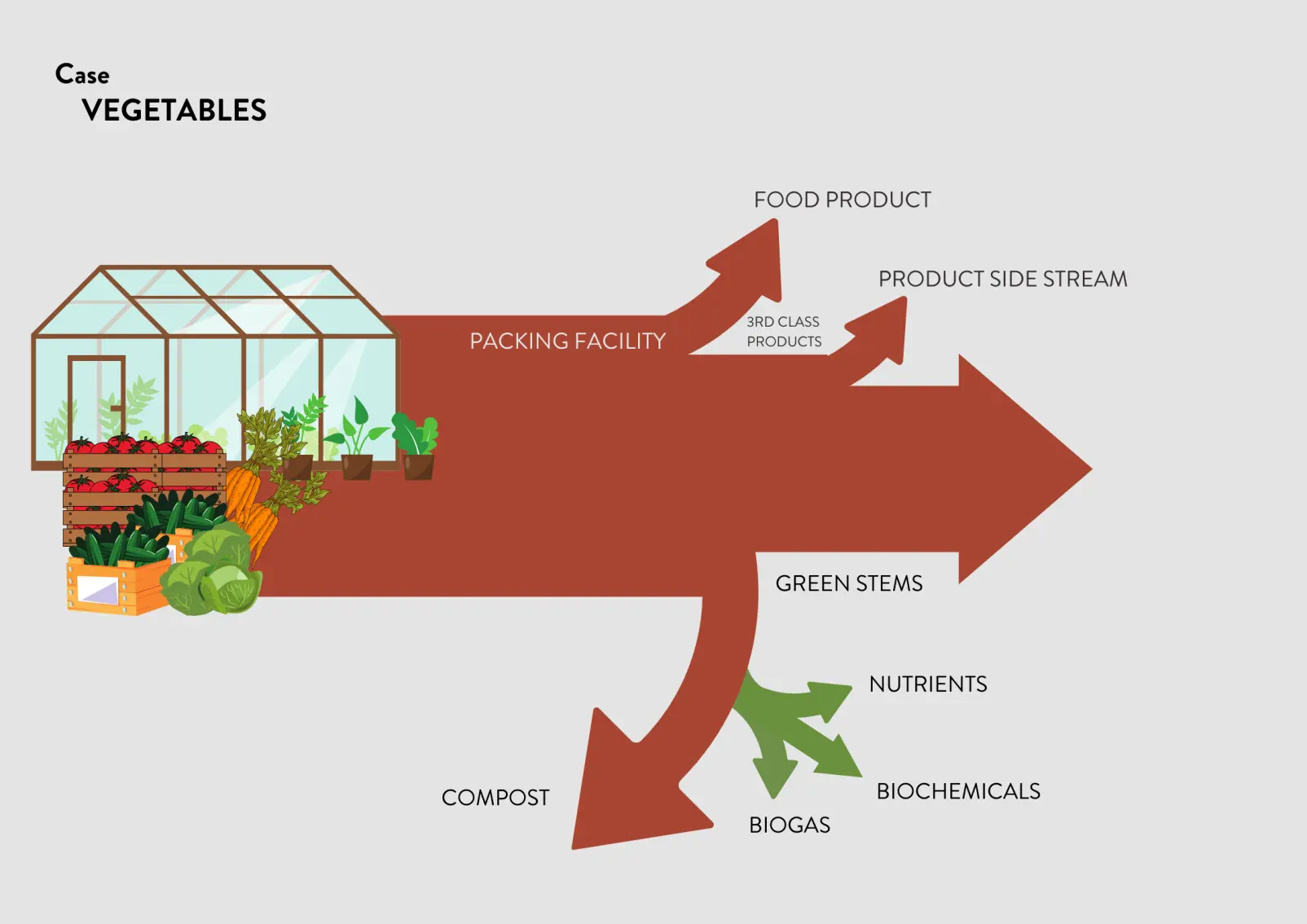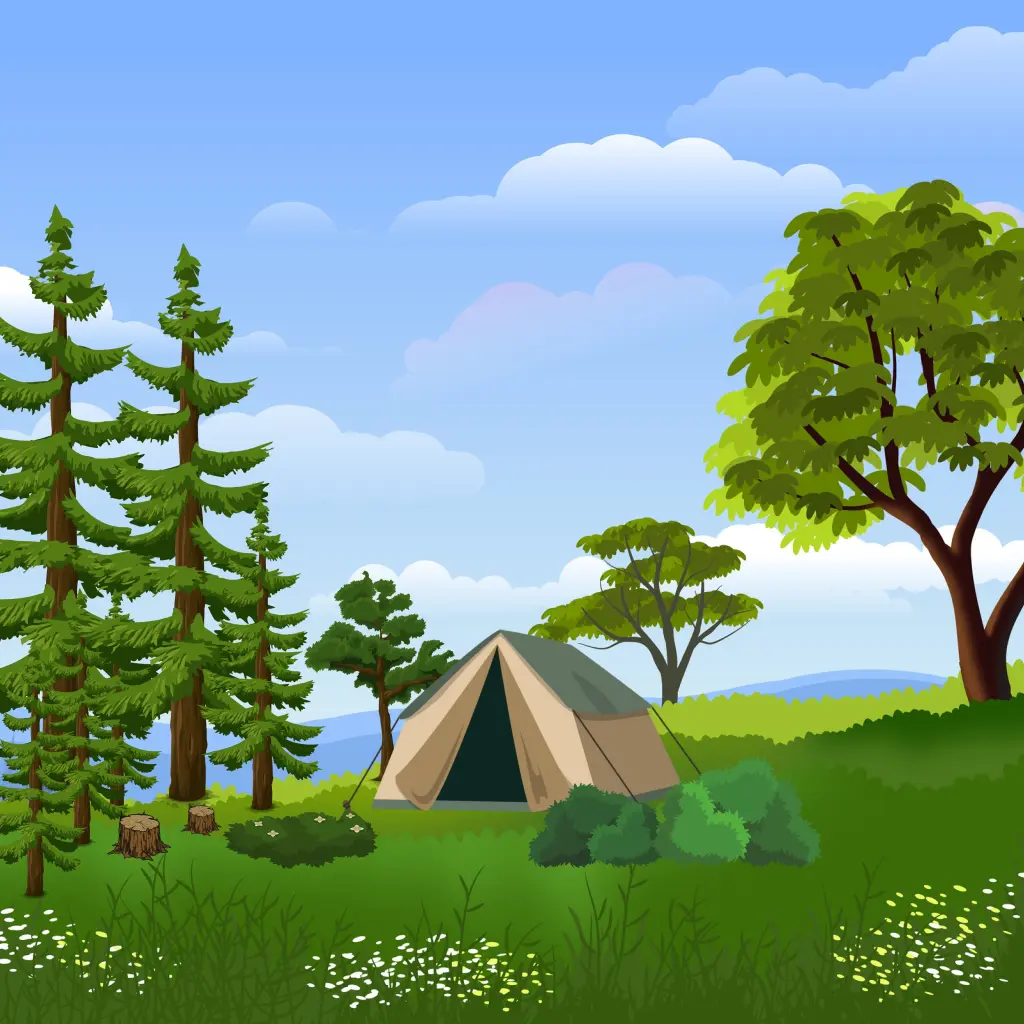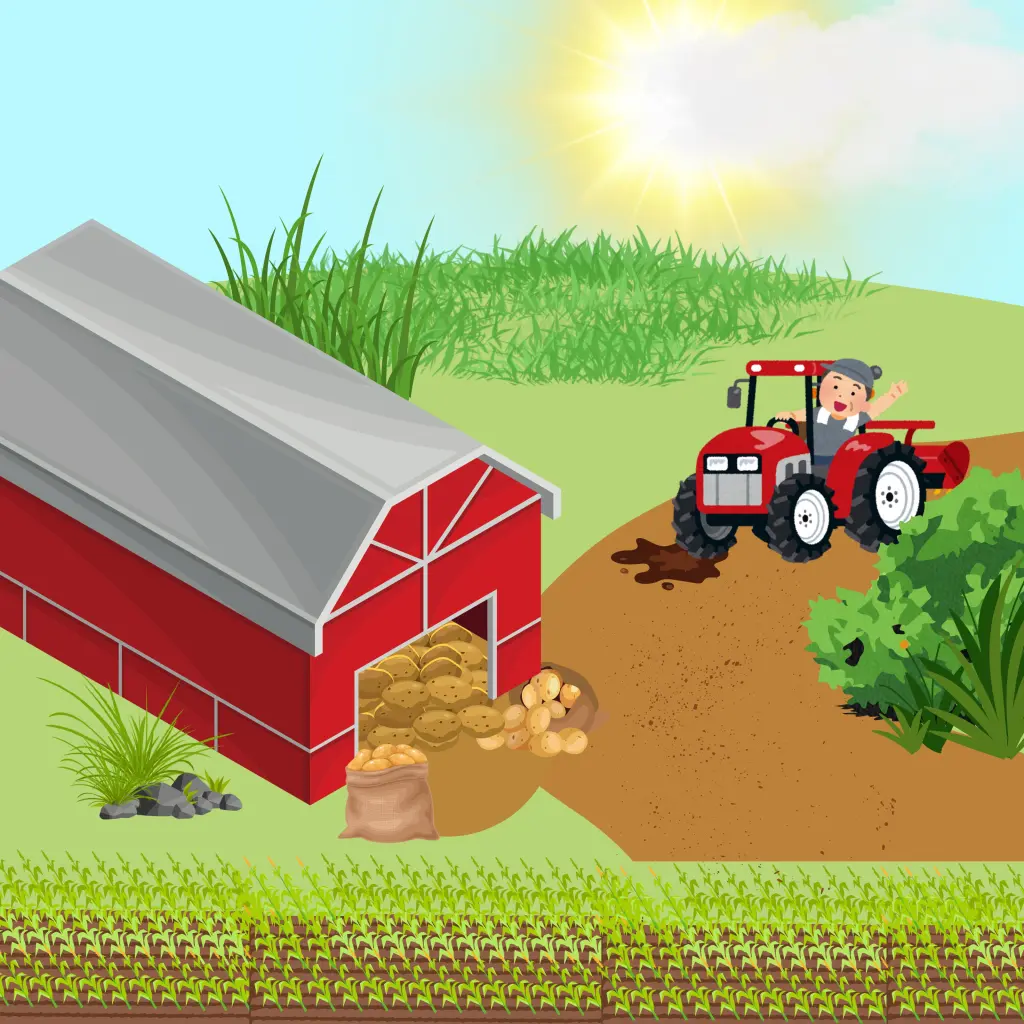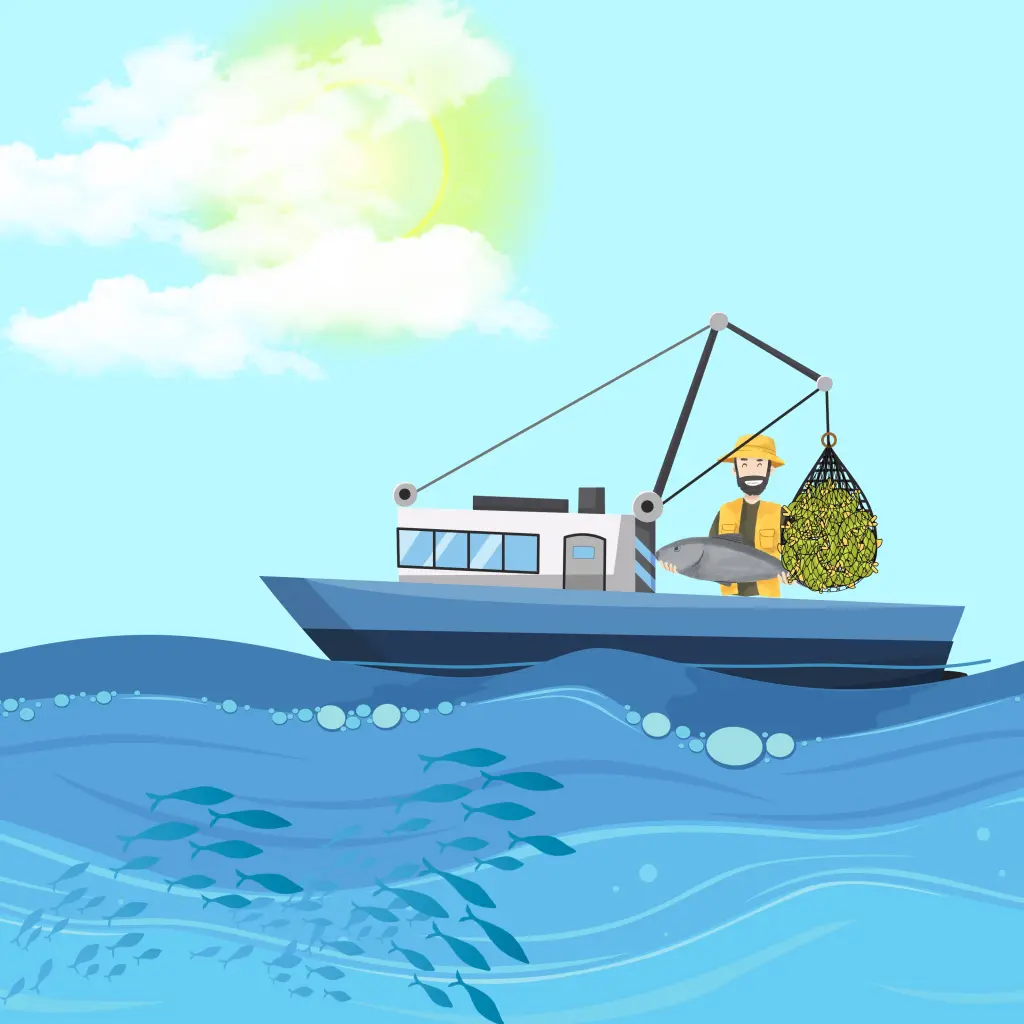
Case: GREENHOUSE VEGETABLES
When growing vegetables, a huge part of the crop production is not used. These include stems, leaves, turnips, peels and spoiled vegetables.We are exploring how to turn the unused plant parts from greenhouse vegetable production into marketable products. We look for uses for vegetable stems, leaves and other parts that are now left over from greenhouses.

Surplus greenhouse vegetables and their parts can be used to produce soil improvers, biogas and biochemicals. Source: KristinaEco
Vegetables have a lot of potential for use beyond what they are usually used for. For example, the stems and leaves contain fibre, the lignin that binds them together, and carbohydrates such as sugars.
Parts unsuitable for food production can also be turned into biogas. In this case, the excess vegetable parts are composted to produce gas by anaerobic digestion. This methane-rich gas can replace the current use of natural gas. At the same time, these compost plants produce soil suitable for cultivation.
Biorefineries can produce biochemicals from plant parts that are generally left unused. Biochemicals can replace chemicals made from fossil raw materials in industry.
At present, the use of surplus parts from greenhouses is hampered, for example, by the high proportion of plastic scraps and pieces of string. So far, there have not been enough viable ideas for new products.
In our project, greenhouse producers, researchers and industry work together to create new business. We have identified business opportunities with greenhouse producers. Researchers have developed product ideas used to design business with companies. Products and business opportunities are developed and tested in everyday situations.
Explore other case examples:

Case: WOOD
A huge amount of unutilised wood material is left in forests and sawmills, often ending up as fuel – but could it become something much more valuable?
In the KristinaEco project, researchers, forest machine entrepreneurs and industry are working together to develop new ways to refine forest residues, sawdust and branches into products such as biochar, raw materials for cosmetics and bio-based plastics. In this way, side streams from forests can become profitable and sustainable business.

Case: POTATO
Usually, only the part of the potato that ends up on the dinner plate is used, even though a large amount of valuable components go to waste – broken potatoes, peels and other surplus are often composted or used as animal feed.
In the KristinaEco project, researchers, farmers and industry are working together to find more profitable ways to refine these side streams into biogas, biochemicals and soil improvers. This way, even unmarketable potatoes can generate profitable business.

Case: FISH
Usually, only fish fillets are used, even though scales, skin, bones and viscera also contain a wealth of valuable substances.
In the KristinaEco project, researchers, fish farmers and industry are working together to develop new ways to refine fish residues into products such as gelatine, proteins, fish oil and biogas. This way, previously wasted fish parts can produce new products and business – benefiting both people and the environment.
More information:


